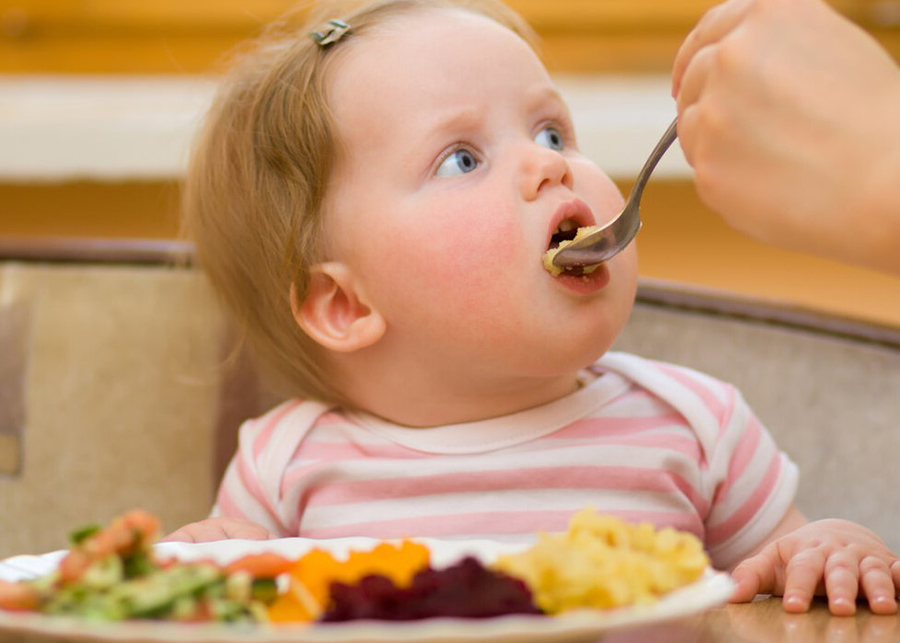A one-year-old can eat a variety of different vegetables. While each child’s tastes and preferences will be different, there are foods that are generally safe for this age range. Broccoli is an excellent choice, thanks to its high levels of micronutrients and cancer-fighting compounds. This veggie can be enjoyed by itself or added to many other foods. For example, broccoli is delicious steamed or added to cheesy baked potatoes. You can also serve it as part of a cooled soup. Cooked cauliflower is another great vegetable to try. Cooked cauliflower offers a challenge to a new chewer, and it has a high nutritional value.
If you’re wondering what vegetables can a one-year-old eat, here are some suggestions. Broccoli is an excellent choice, thanks to its high levels of micronutrients and cancer- fighting compounds. This veggie can be enjoyed by itself or added to many other foods. For example, broccoli is delicious steamed or added to cheesy baked potatoes. You can also serve it as part of a cooled soup. Cooked cauliflower is another great vegetable to try. Cooked cauliflower offers a challenge to a new chewer, and it has a high nutritional value.

Mushy peas
Mushy peas are a very versatile vegetable. They are high in vitamins and contain a lot of fibre. You can serve them warm or cooled. They are a great choice for vegetarians and vegans.
Cauliflower
Cauliflower is a delicious, nutritious vegetable that belongs to the Brassicaceae family. It contains a high amount of vitamins, fiber, and antioxidants. These nutrients are essential for maintaining a healthy immune system and gut. It can be added to a baby’s diet as early as eight months. It can be served steamed, grated, or pureed. It can also be included in finger foods and baby led weaning. Cauliflower should be introduced gradually to avoid causing discomfort in your child.
French beans
Beans are great for babies, but be sure to keep portion sizes in mind, as too much can cause digestive upset. One serving should be enough to satisfy a hungry baby, and be sure to avoid making beans the bulk of the baby’s diet. Instead, focus on introducing a variety of whole foods to ensure that your baby gets all of the nutrients he needs.
Butternut squash
When you’re preparing your baby’s first meals, be sure to include a variety of fruits and vegetables. You may want to start with mashed or pureed versions of butternut squash, which will be easier for your little one to handle. You may also want to consider slicing the squash into small pieces or allowing your child to spear it with a fork. Just be sure to supervise your child while he or she is eating to avoid choking.
Zucchini
Your 1 year old can safely start eating zucchini if you cook it in the right way. Cut it into thick sticks or quartered spears and cook it until it’s firm enough to grasp. You can give it to your baby by hand or cut it into bite-size cubes. You can also add some herbs and spices to the mixture to make it more interesting and appealing. Zucchini is not among the major allergens, and there are few reports of allergic reactions.

Sweet potatoes
Sweet potatoes are an excellent source of potassium, vitamin C, fiber, and beta-carotene, which prevents certain types of cancer and mop-ups free radicals in the body. This vegetable also contains plenty of Vitamin A, which gives growing eyes the boost they need to develop. Sweet potatoes also contain beta -carotene, a type of antioxidant, which helps protect against heart disease.
Avocados
Avocados are a healthy vegetable that can contribute to your baby’s fiber intake. A 30 g serving of avocado contains two grams of fiber. This amount of fiber is comparable to or greater than fiber from nearly all transitional and complementary foods. In addition, avocados have a high proportion of soluble fiber at 2.7% of their weight.
Tofu
Tofu is a good vegetable for a young baby to start eating. Tofu is not difficult for a baby to break down and gum, and it is easily incorporated into a baby’s diet through spoon-feeding purees. It is also easy to mix with other foods.
What Vegetables Can a One Year Old Eat? Result
When starting with this diet, it’s important to consult a pediatrician or nutritionist first. However, once you get the green light that your baby is ready for solid foods, these foods are easy to try. In fact, you probably have them in your kitchen already. Broccoli is an excellent source of nutrients that help your child grow more rapidly, and cauliflower is one of the most nutritious veggies in existence.

